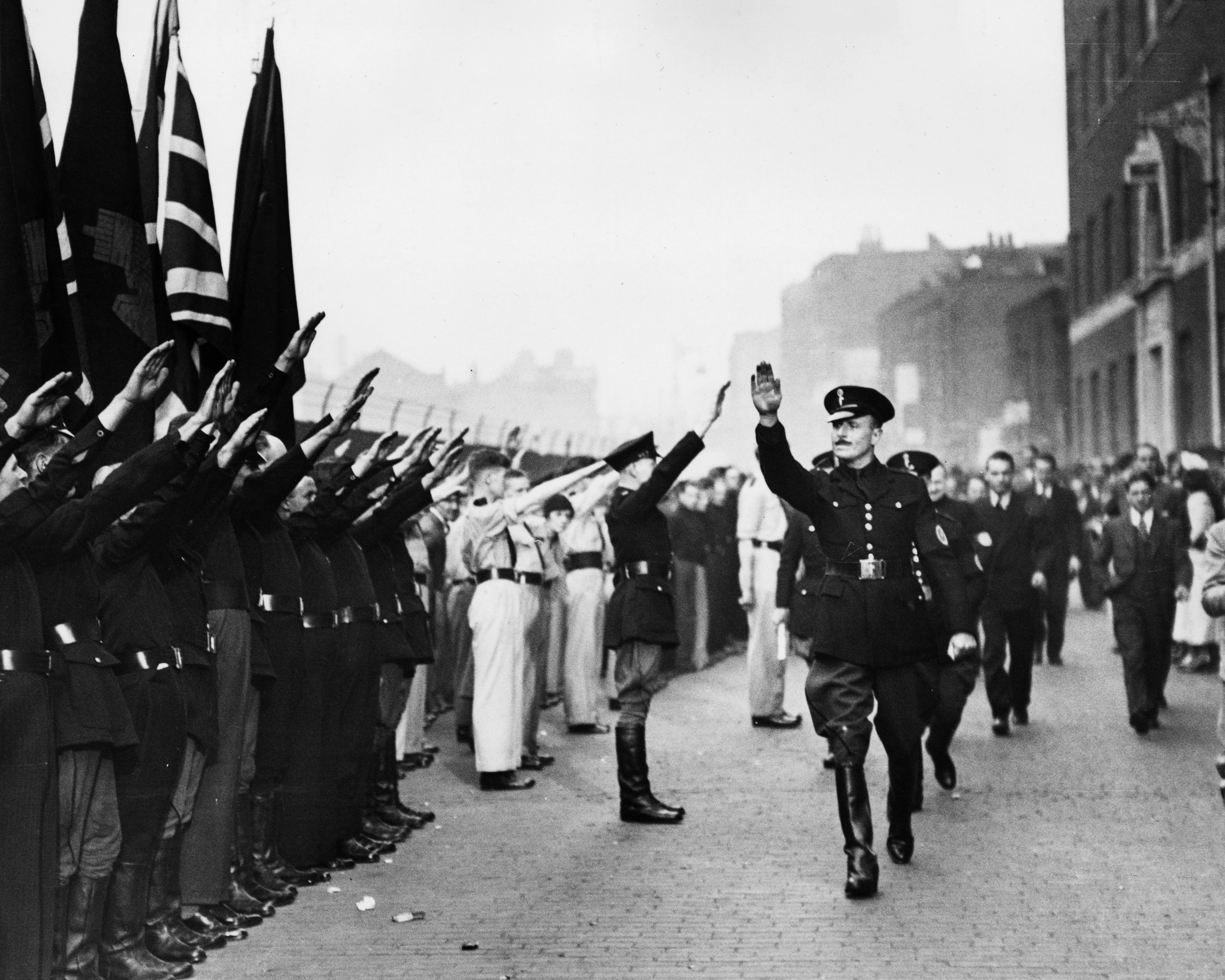Adolf Hitler (1889–1945)

Adolf Hitler gives an impassioned speech while opening the Berlin International Auto Show in 1940.
Source: Corbis via Getty Images
Nationality: German
Political party: Nazi Party
Background: Before entering politics, Hitler was a failed painter and a German private during World War I.
Rise to power: Hitler became leader, or führer, of the newly formed Nazi Party in 1921. In 1933, he was appointed chancellor of Germany and quickly eliminated all political opposition, ruling the country as a single-party state.
Radical views: Hitler and his Nazi Party advanced the idea of Aryan (essentially white Germanic) racial superiority. These views led to the Nazis' state-sponsored mass murder of six million Jews. The Holocaust, as it came to be known, involved eleven million murders total, including five million gay people, Roma people, people with disabilities, and others whom the Nazis deemed inferior.
Benito Mussolini (1883–1945)

Benito Mussolini assumes a characteristic pose as he speaks to an audience in Italy in 1934.
Source: Corbis via Getty Images
Nationality: Italian
Political party: Fascist Party
Background: Mussolini grew up in socialist circles and worked as a journalist, schoolmaster, public speaker, and soldier.
Rise to power: In 1919, Mussolini, or Il Duce (“the leader”), created Italy’s Fascist Party. In 1922, the Italian king appointed Mussolini prime minister after a mass fascist demonstration known as the March on Rome, which provoked fears of civil war if Mussolini were denied power.
Radical views: Mussolini adopted an explicitly racist component to Italian fascism, passing laws that banned Black and Jewish people from marrying white, Christian Italians or serving in many professional positions.
Francisco Franco (1892–1975)

Former Spanish dictator General Francisco Franco (right) salutes beside his wife Carmen Polo (second from right) as they listen to the national anthem during a ceremony at El Pardo Palace on October 4, 1975.
Source: Reuters
Nationality: Spanish
Political party: Falange Española
Background: A military prodigy, Franco rose through the ranks to become Spain’s youngest general.
Rise to power: Generalísimo Franco seized power in 1936 after commanding a group of nationalists in the Spanish Civil War against the left-wing Popular Front government. He ruled as the head of a one-party state until his death in 1975.
Radical views: Although Franco’s government officially stayed neutral during World War II, he supported the Axis powers of Germany, Italy, and Japan. During his nearly four decades in power, Franco executed or imprisoned hundreds of thousands of political dissidents.
Ferenc Szálasi (1897–1946)

A portrait of Ferenc Szálasi from October 1944.
Source: Polish National Digital Archives
Nationality: Hungarian
Political party: Arrow Cross Party
Background: Szálasi served in various military positions for two decades before entering politics.
Rise to power: After leaving the military in 1935, Szálasi founded multiple political parties that the Hungarian parliament banned for their extreme views. In and out of prison, Szálasi became leader of the Arrow Cross Party in 1938 but operated in secret. With the German occupation of Hungary in 1944, the Nazis installed Szálasi as Hungary’s head of state because of his loyalty to Hitler and commitment to anti-Semitism.
Radical views: During Szálasi’s brief fascist reign (October 1944–March 1945), his government murdered thousands of Jewish people.
Oswald Mosley (1896–1980)

Oswald Mosley inspects members of his British Union of Fascists in London in October 4, 1936. Their presence sparked a riot that became known as the Battle of Cable Street.
Source: Central Press via Getty Images
Nationality: British
Political party: British Union of Fascists
Background: Sir Oswald Mosley was a British aristocrat, fencer, World War I veteran, and member of parliament.
Rise to power: Mosley served in British parliament for several years. After losing an election in 1931, Mosley formed the British Union of Fascists (BUF). Although Mosley was never reelected, the BUF attracted tens of thousands of members. During World War II, the British government banned the BUF and imprisoned Mosley as a potential enemy sympathizer.
Radical views: Mosley was openly anti-Semitic. His party operated a group of streetgangs called the Blackshirts, which attacked Jews, communists, and trade unionists.
Plínio Salgado (1895–1975)

Plínio Salgado in 1959.
Source: Brazilian National Archives
Nationality: Brazilian
Political party: Brazilian Integralist Action
Background: Salgado was a journalist, author, and local politician.
Rise to power: Salgado modeled his fascist views after Benito Mussolini following an influential visit to Italy in 1930. Two years later, Salgado launched the Integralist Party with the aim of returning the country to traditional Brazilian pride, values, and Christianity. In 1939, he was exiled to Portugal for supporting an uprising against the Brazilian government.
Radical views: Although Salgado took inspiration from Mussolini—and even oversaw his own green-shirted paramilitary force—he did not organize around anti-Semitism or broader ethnic purity.